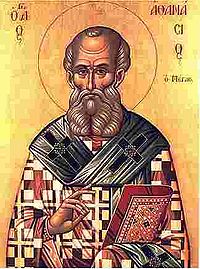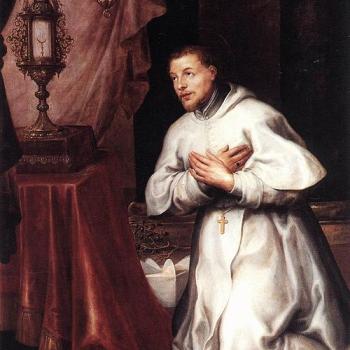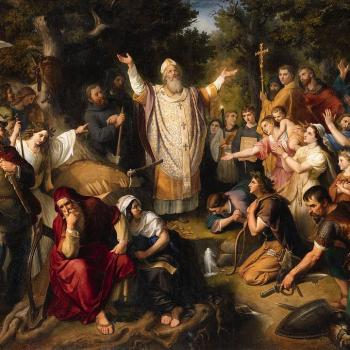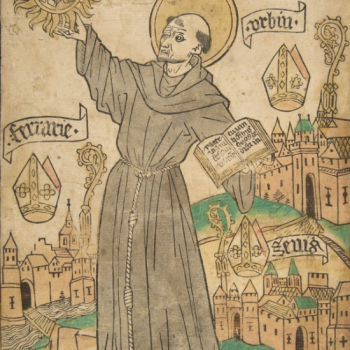No conversation on the theology of the Early Church on the Cross would be complete without an examination of the writings of Athanasius. This theological giant wrote a generation before Augustine and was, in part, responsible for Augustine’s own conversion. Athanasius’ book On the Incarnation was written as a tome in favor of traditional understandings of the person of Jesus and His work on the cross in the face or a rising tide of Arianism that was on the verge of becoming the dominant theological framework within the church.
Athanasius’ theology of the cross saw it as primarily a place where God injected the world with a new life that could overpower the corruption of sin. Athanasius believed that in order for the world to be redeemed two things had to be accomplished. First, the plan would have to take away the transgressions that man had committed that removed him from the original life with God that was intended for him from the creation of the world. Second, the plan had to be able to actually restore the life that was lost.
Athanasius believed that repentance could take away the transgressions of people, but there needed to be something more that could restore the life that God had intended for humanity. If Jesus had not died God could choose to declare humanity righteous by a fiat every time man sinned. This is a never ending cycle that gets worse and worse because a person is trained more and more how to rebel against God. This leaves each person in a state worse then Adam, for at least Adam was accustomed to sin when he fell. God sought to restore men to a better place.
This restoration was accomplished through the cross. The cross introduced a new principle of life. This life was seen in Jesus who, “He cleansed lepers, He made the lame to walk, He opened the ears of the deaf and the eyes of the blind, there was no sickness or weakness that He did not drive away.” Athanasius was convinced that these actions were clearly not the actions of a mere man, but those of God. Unlike all other people who were corrupted by sin when they encountered it, Jesus was the “artificer of man” who had caused all things to come into existence and therefore had the life that could restore it. In Jesus, corruption is annihilated but man is restored.
The life of God rescues man from the corruption of sin, because it at that moment that Christ takes on human suffering to the point of death and in doing so establishes mortal flesh as a temple for God. Jesus bore human flesh in order that human flesh would be capable of receiving the Holy Spirit. Through Christ all men were able to become temples of the Holy Spirit and as places where God dwelled they were equiped to live life in unity with God. Not only was sin forgiven, but life was restored. Athanasius puts it like this:
“For naturally, since the Word of God was above all, when He offered His own temple and bodily instrument as a substitute for the life of all, He fulfilled in death all that was required. Naturally also, through this union of the immortal Son of God with our human nature, all men were clothed with incorruption in the promise of the resurrection. For the solidarity of mankind is such that, by virtue of the Word’s indwelling in a single human body, the corruption which goes with death has lost its power over all.”
Athanasius uses a parable to describe the process. He says that Jesus dying on the Cross is like a King entering another mans house. The honor of the king makes the house of the other man more honorable, in fact the whole city is honored. While the King inhabits a house no thief would dare to enter it, and the designs of the enemy of the house are foiled. To be a member of the Church is to be associated with Christ who has entered mortal flesh and foiled the plans of the enemy.
God has given us His honor, and has done it in an all encompassing way. By dying publicly he has shown all the true reality of the resurrection. Jesus also died at the hands of others so that he might declare that it is not a self inflicted death that he has power over, but he has victory over all death, even that which is inflicted by others. He died on a cross to show his victory over the curse. He is crucified with his arms spread out so that he might die in such a posture that he shows the world that all are now welcome in him. In Jesus there is a new Temple where human flesh has been given honor and has been made a dwelling place of the Holy Spirit.













